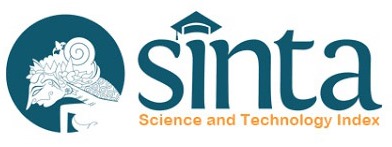The Effect of Aeration and Chlorella vulgaris Initial Cell Density on Mercury Removal
R Mohammad Alghaf Dienullah, Harmin Sulistiyaning Titah, Herman Pratikno, Ipung Fitri Purwanti, Widhowati Kesoema Wardhani
Abstract
Research on Chlorella vulgaris is vital due to its rapid growth and versatile habitat adaptability. C. vulgaris is a fast-growing green microalga used for phycoremediation of heavy metals such as mercury which is usually found in gold mining wastewater. This research aims to determine the best mercury removal efficiency with variations in aeration rate, medium concentration, and C. vulgaris inoculum concentration. This research was conducted by cultivating C. vulgaris and examining its response to various parameters in an artificial mercury (II) chloride (HgCl2) solution. Moreover, other parameters such as cell density, pH, temperature, bicarbonate, and dissolved oxygen were monitored over a seven-day experimental period. The highest removal efficiency (61.34%) at a mercury concentration of 0.3 mg/L was found in the variant with a walne medium dose of 1 mL/L, inoculum concentration of 10%, and aeration rate of 3 L/min. This study confirmed the potential of C. vulgaris as an effective agent for heavy metal removal, particularly mercury, and contributed to bioremediation.
Keywords
mercury; aeration rate; walne medium; Chlorella vulgaris
DOI:
https://doi.org/10.15578/squalen.921
Refbacks
- There are currently no refbacks.

ISSN : 2089-5690(print), E-ISSN : 2406-9272(online)
This work is licensed under a Creative Commons Attribution-NonCommercial-ShareAlike 4.0 International License.











